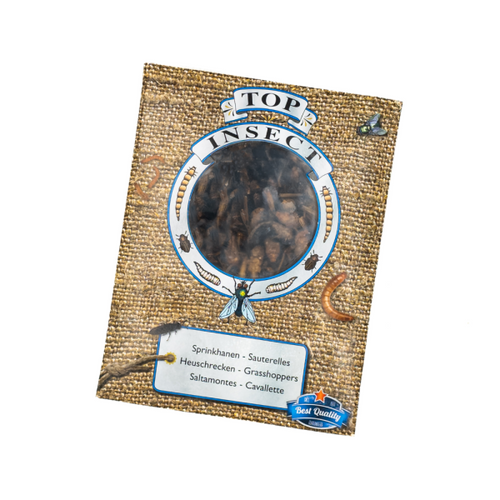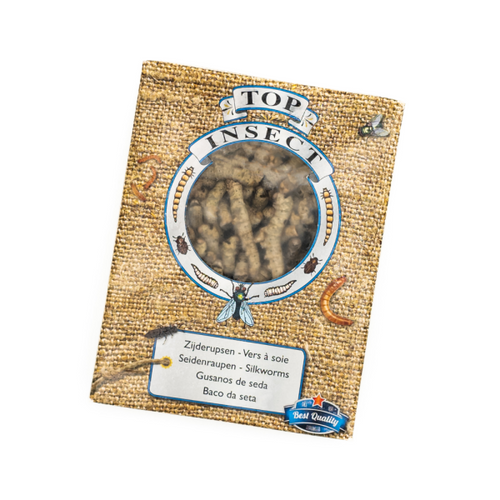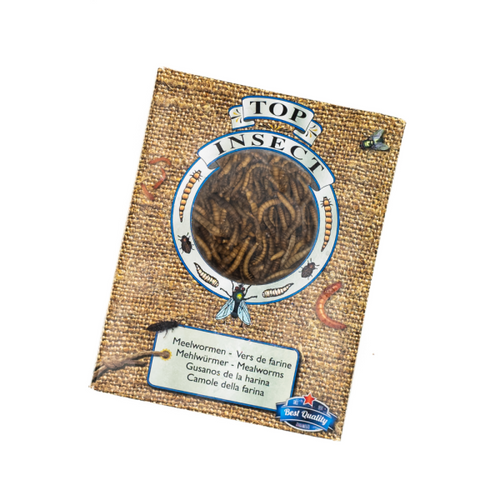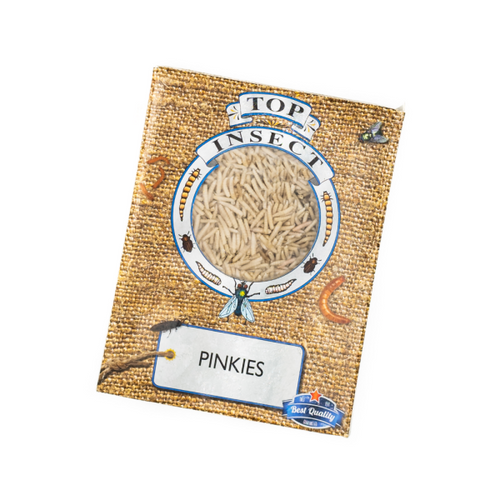1ltr box approx 375g Frozen Grasshoper/locust
Description
Our farms feed the grasshoppers/locusts on several kinds of grasses without any added growth promoters or chemicals. Grasshoppers have a high nutritional value and have furthermore, due to their hard armour, the ability to clean young birds’ intestines by dragging along the surplus mucus in the intestines during the intestinal transit. This is especially of importance to purely insect-eating birds. It is recommended to cut the grasshoppers in pieces for small birds.
Nutritional advice
Topinsect insects should always be defrosted before being offered to animals. An insect which is still frozen could cause stomach or intestinal cramps. Never offer an animal more defrosted insects than it can eat. If too many insects are offered, they’ll not be eaten and their quality will decrease rapidly.
topisect uses locusts. Their breed grasshoppers on several kinds of grasses without any added growth promoters or chemicals. Due to the boiling and shock freezing process on our equipment, the locusts are disposed of all bacteria and become virtually sterile. The remaining fraction of bacteria and fungus is well below the standards which apply to human and animal food. This is frequently verified through analysis. The double process makes the insects also better digestible for animals. Grasshoppers have a high nutritional value and have furthermore, due to their hard armour, the quality to clean young birds’ intestines by dragging along the surplus of mucus in the intestines during the intestinal transit. This is especially of importance to purely insect-eating birds. It is recommended to cut the grasshoppers in pieces for small birds. Grasshoppers are herbivores from the order Orthoptera. There are various subfamilies in several families. For instance, bush crickets are more related to crickets than to field grasshoppers. Grasshoppers have the ability to jump far due to their powerful hind legs. Moreover, most species can even sail short or long distances. Only a few species can really fly; these swarming grasshoppers are also known as Locusta Migratoria. Some of them have short antennas (field grasshoppers), while others have long antennas (bush crickets). Most field grasshoppers lay their eggs in packs in the ground. The females have an egg-laying apparatus which is adapted to dig. The egg packs are known to contain a dozen to more than a hundred eggs. The eggs of many species go through a diapause to survive either winter or dry periods. If the weather conditions are right, the eggs will hatch. The nymphs, as the larvae of hemimetabolic insects are called, go through five to seven sloughing phases during their development. They grow during each sloughing phase. When they go through their last sloughing phase, they are full-grown. The young full-grown insect needs a couple of days or weeks to be sexually mature. Species which go through a diapause in the last sloughing phase even take a couple of months over it. Grasshoppers are eaten all over the world due to their high protein percentage. The military advises its soldiers to catch grasshoppers in order to eat them when they are lost and running out of food. Feeding Directions Topinsect insects should always be defrosted before being offered to animals. An insect which is still frozen could cause stomach or intestinal cramps. Never offer an animal more defrosted insects than it can eat. If too many insects are offered, they’ll not be eaten and their quality will decrease rapidly. How defrosting Topinsect insects? - Spread the insects out in a thin layer in a warm room for about a quarter of an hour. - If you wish to accelerate the defrosting process, you should put the insects in a kitchen sieve with fine mesh and wash them with cold or tepid water. How offering defrosted Topinsect insects? To birds, reptiles and amphibians: - Always use clean dishes or jars - Do not place the insects in direct sunlight or under a lamp in a terrarium and cover the dishes to put them in the shadow. Due to the high temperature and high protein percentage, the feed will dry out and the decomposition (rot) accelerates. A steak in the sun will neither be long edible. - It is recommended to offer smaller parts several times per day in case of warm weather. To fishes: - The Topinsect insects can be thrown in the aquarium or pond once they are defrosted. - The following rule also applies here: never offer more insects than necessary because insects which are not eaten immediately will sink to the bottom and rot. Analyses In Fresh In Dry Matter Fluid 64,3 % 0% Dry Material 35,7% 0% Raw ashes 1,1% 3,1% Protein 20,5% 57,4 % Fat 11,7% 32,7% Carbohydrates 2,4% 6,7 % Starch 0 % 0% Packaging 1 litre package 1 litre of Grasshoppers is approximately 200 gm. Store at -18°C








